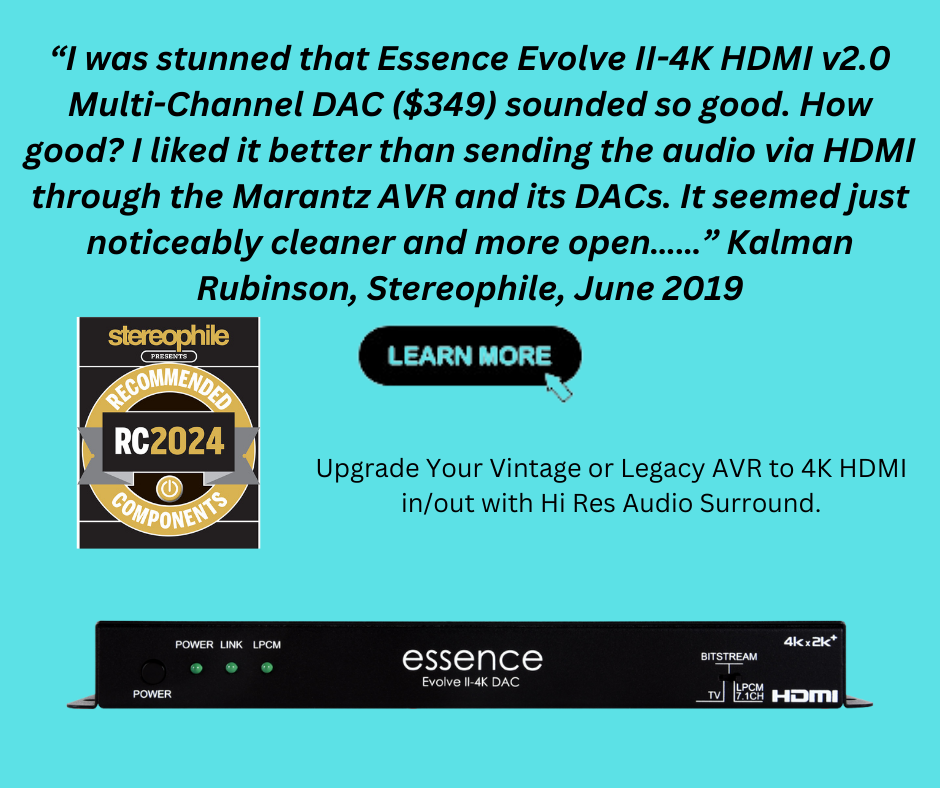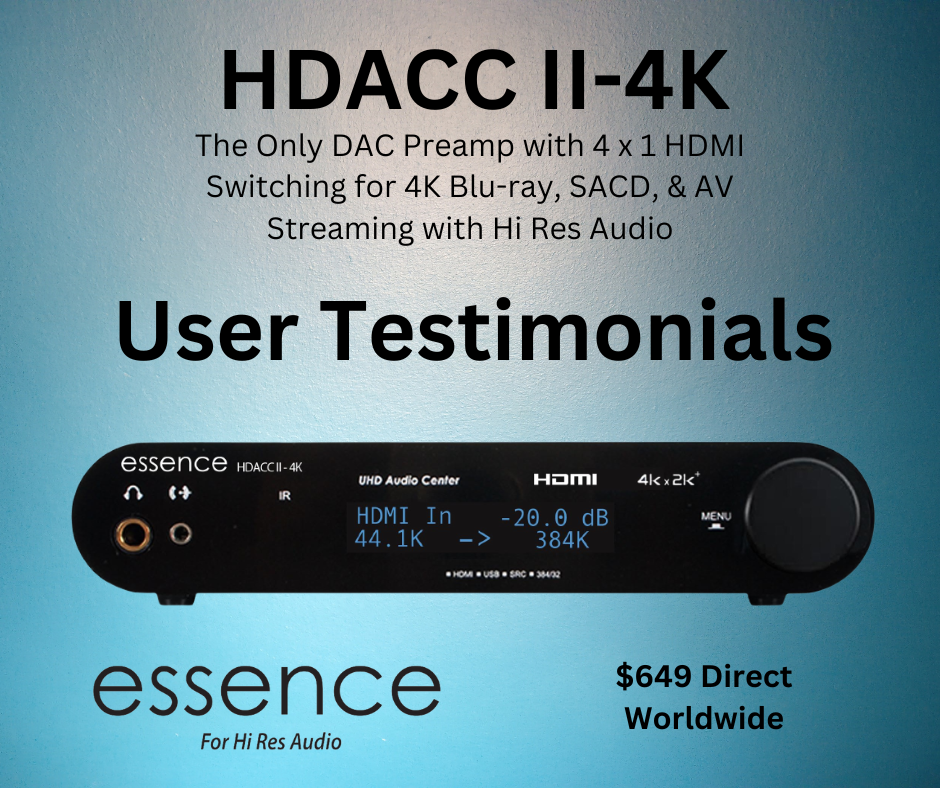Bob Rapoport
Music Reviewer
Thread Starter
- Joined
- Jan 29, 2018
- Posts
- 111
More
- Preamp, Processor or Receiver
- Essence HDACC II-4K
- Main Amp
- Essence DPA-440
- Universal / Blu-ray / CD Player
- Sony 4K
- Front Speakers
- Essence Electrostats
- Center Channel Speaker
- Essence
- Surround Speakers
- Essence
- Subwoofers
- Essence
- Screen
- Screen Goo painted screen, 4 coats
- Video Display Device
- Vizio M70
- Remote Control
- Essence
The Myth:
Some manufacturers recommend turning speakers inward or outward to “smooth out” the treble response. The story goes that off-axis listening gives you a more natural sound.
The Truth:
Physics says otherwise. As frequency rises, wavelengths shorten. Bass spreads like a balloon, but treble beams forward like a flashlight. The only way to hear the full frequency response — especially in the high frequencies — is to listen on-axis.
When a manufacturer tells you to toe-in or toe-out unnaturally, it’s often to mask flaws such as tweeter ringing or resonances at the top end. In other words, it’s a design compromise, not a performance feature.
Why It Matters:
Stereo recordings are mixed to create a 3D soundstage, with instruments and voices placed precisely across the stage. If you’re listening off-axis, you’re throwing away localization cues and detail. On-axis, with careful setup, you hear what the artist and engineer intended.
The Takeaway:
Don’t let myths or marketing gimmicks steer you off course. Start with on-axis listening — the physics are on your side.
Some manufacturers recommend turning speakers inward or outward to “smooth out” the treble response. The story goes that off-axis listening gives you a more natural sound.
The Truth:
Physics says otherwise. As frequency rises, wavelengths shorten. Bass spreads like a balloon, but treble beams forward like a flashlight. The only way to hear the full frequency response — especially in the high frequencies — is to listen on-axis.
When a manufacturer tells you to toe-in or toe-out unnaturally, it’s often to mask flaws such as tweeter ringing or resonances at the top end. In other words, it’s a design compromise, not a performance feature.
Why It Matters:
Stereo recordings are mixed to create a 3D soundstage, with instruments and voices placed precisely across the stage. If you’re listening off-axis, you’re throwing away localization cues and detail. On-axis, with careful setup, you hear what the artist and engineer intended.
The Takeaway:
Don’t let myths or marketing gimmicks steer you off course. Start with on-axis listening — the physics are on your side.













